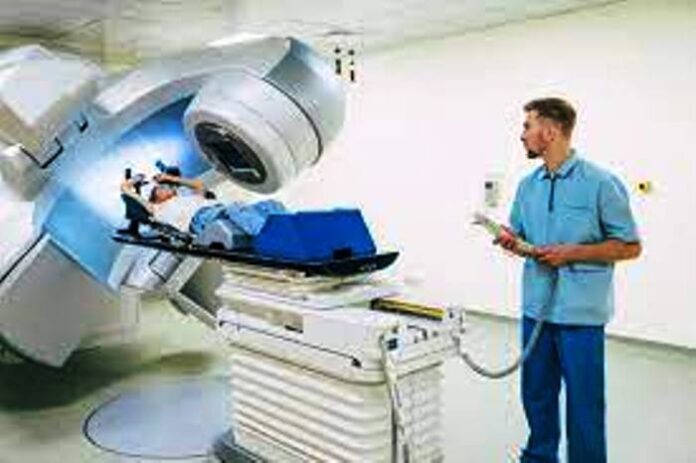New Delhi, November 17, 2023 : Lung cancer remains a formidable adversary in the world of oncology, accounting for a significant number of cancer-related deaths worldwide. Its complex nature and diversity of forms make it a challenging disease to treat. Fortunately, medical science has made remarkable strides in improving lung cancer treatment options, and radiation therapy has emerged as a powerful tool in the fight against this deadly disease.
Before delving into the role of radiation therapy in lung cancer treatment, it is essential to understand the disease itself. Lung cancer primarily consists of two main types: non-small cell lung cancer (NSCLC) and small cell lung cancer (SCLC). NSCLC accounts for about 85% of lung cancer cases and includes subtypes like adenocarcinoma, squamous cell carcinoma, and large cell carcinoma, among others. SCLC, on the other hand, constitutes the remaining 15% and tends to be more aggressive.
The Role of Radiation Therapy
Radiation therapy, also known as radiotherapy, involves the use of high-energy X-rays or other forms of radiation to target and kill cancer cells. In lung cancer treatment, radiation therapy serves several essential purposes:
Primary Treatment: Radiation therapy can be used as the primary treatment method for early-stage lung cancer, either alone or in combination with surgery. For patients who are not candidates for surgery, radiation therapy can be a curative approach, offering the potential for long-term survival.
Adjuvant Therapy: In cases where surgery successfully removes a portion of the tumor but may leave behind microscopic cancer cells, radiation therapy can be administered as an adjuvant treatment to eliminate residual cancer cells and reduce the risk of recurrence.
Neoadjuvant Therapy: In some situations, radiation therapy can be given before surgery (neoadjuvant therapy) to shrink the tumor, making it more manageable for surgical removal
Palliative Care: For advanced-stage lung cancer patients for whom a cure is no longer a realistic goal, radiation therapy can be used to alleviate symptoms, such as pain, shortness of breath, and bleeding, by shrinking tumors and improving the patient’s quality of life.
Types of Radiation Therapy
Radiation therapy comes in several forms, and the choice depends on the specific characteristics of the lung cancer and the patient’s overall health. The two primary types of radiation therapy used in lung cancer treatment are:
External Beam Radiation Therapy (EBRT): This is the most common form of radiation therapy for lung cancer. It involves directing a beam of radiation from outside the body towards the tumor. Modern EBRT techniques, such as intensity-modulated radiation therapy (IMRT) and stereotactic body radiation therapy (SBRT), enable highly precise delivery of radiation, minimizing damage to surrounding healthy tissues.
Brachytherapy: This method involves placing a radioactive source directly inside or very close to the tumor. While less common in lung cancer, it can be used in specific situations, such as to treat recurrent or centrally located tumors.
Advancements in Radiation Therapy
In recent years, the field of radiation therapy has witnessed remarkable advancements, improving both its effectiveness and patient experience. Some notable developments include:
Image-Guided Radiation Therapy (IGRT): IGRT allows real-time imaging during treatment, ensuring that the radiation is accurately targeted to the tumor. This precision minimizes damage to healthy tissues and allows for higher doses of radiation to be delivered to the cancer cells.
Proton Therapy: Proton therapy is a cutting-edge form of radiation therapy that uses protons instead of X-rays. It offers the advantage of precise tumor targeting while sparing surrounding tissues even more effectively, reducing the risk of side effects.
Immunotherapy and Radiation Therapy Combinations: Researchers are exploring the synergy between radiation therapy and immunotherapy, as the immune system plays a crucial role in fighting cancer. Combining these two treatments may enhance the body’s ability to recognize and attack cancer cells.
Radiation therapy has become an indispensable component of lung cancer treatment, offering curative potential in early-stage cases, enhancing the effectiveness of surgery, and providing palliative care for advanced-stage patients. With ongoing advancements in technology and treatment approaches, radiation therapy continues to evolve, offering hope and improved outcomes for lung cancer patients. It is imperative that everyone stays informed about these developments to make the best treatment choices and continue to make progress in the fight against lung cancer.
Corporate Comm India (CCI Newswire)






















